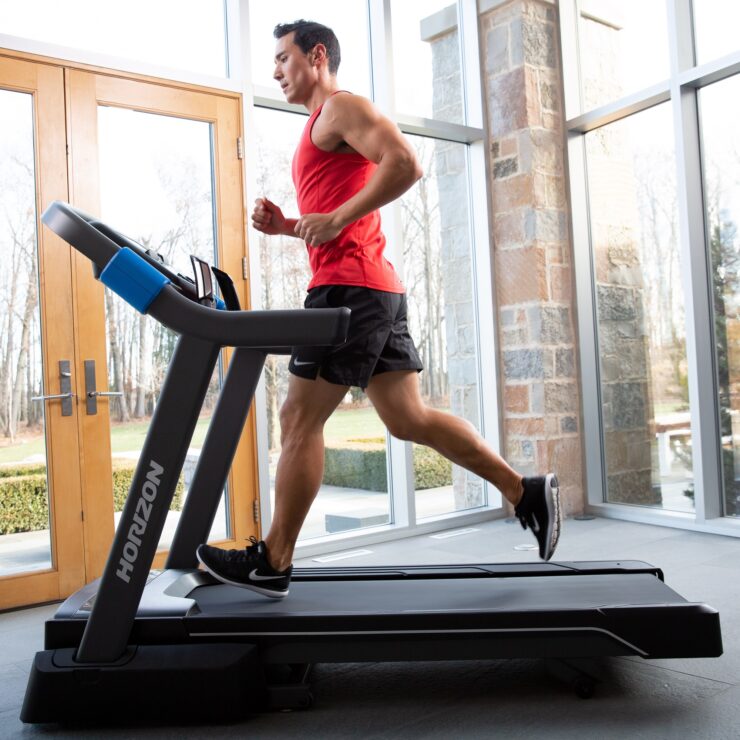Treadmill running is an excellent alternative to jogging outside when the weather isn’t cooperating. Whether you like to micromanage your training schedule or you wish to spruce up your workout session, running on a treadmill is fundamental to every workout regimen.
Several individuals find running on the treadmill easy and enjoyable now that many treadmills include modern technology and media entertainment integration.
However, “how long should you run on a treadmill” is a question that haunts most fitness enthusiasts. However, a simple answer to the question is that your fitness goals will determine it.
Contents
Start With Warming Up
It’s all too easy to just get on the treadmill and start working out. However, much like with outdoor running, you should warm up before beginning the more intensive portion of your run.
Warming up increases your heart rate, oxygenates your muscles, and elevates their temperature, making them more efficient. Before increasing the slope or speed, start with a 5-minute walk or gentle jog on the treadmill.
For Weight Loss

Running is the most effective way to lose weight. If you’re new to jogging, a walk-run regimen might help you become used to exercising for extended periods of time, and this beginner’s walk/run program can assist you in getting started.
Running for 20 minutes three or more times per week is required to achieve consistent weight loss and attain your target weight. The reason for this is to burn calories. One pound of fat requires 3,500 calories to burn. So, while losing weight may take some time, you will succeed if you stick to your routine strictly.
For General Health

Running is classified as a moderate-intensity to vigorous-intensity workout. This degree of activity causes your heart to beat faster. Being able to talk but not sing a song is a solid indicator that you’ve reached the stage.
Before beginning an exercise regimen, consult your doctor if you are new to it. Unless you have a medical problem, moderate exercise is ordinarily safe for most individuals.
Begin slowly, walking at three mph, then gradually raise your speed to 4 – 5 mph until you are running. You’ll be jogging for more extended amounts of time before you know it. However, only 75 minutes of strenuous activity is recommended each week, translating to 15 minutes of running five days a week.
For Muscle Health

Running at about four mph for three hours every week is considered moderate, whereas intensive running at six mph or higher for 75 minutes per week is deemed to be vigorous.
A heart rate monitor can help you figure out how hard you’re working. Working at a moderate effort is between 50 and 70 percent of your maximal heart rate, while vigorous intensity is between 70 and 85 percent.
Subtracting your age from 220 will give you your maximum heart rate. If you’re 40 years old, your maximum heart rate is 180 beats per minute, for example. Your heart rate should be kept between 80 and 112 beats per minute for moderate exercise at 50% to 70%.
Many muscles in your body are worked out during running. It may strengthen and tone the muscles in your legs, hips, and shoulders while enhancing your core strength.
For Race Training

Sometimes treadmill training is required for a race. It doesn’t matter if it’s because of the weather or something else. If the race is taking place outside, we would always recommend doing one run outside per week. The distance of the race and the time it would take you to run that length determines your training.
If you run 3.1 miles at 10 minutes per mile (6 mph), it will take you roughly 31 minutes to finish. Then, on the treadmill, gradually increase your running time until you can beat it. If you run for 40 minutes a week before the race, you’ll find it easier because you’ve already covered more ground.
In your training runs, you may wish to undertake some speed work. These are made specifically for treadmill running and will help you run faster on your regular runs. If your race involves uphill sections, you may even do the same thing on a treadmill by scheduling an incline.
Tips To Choose A Treadmill

If you’re looking for a new home treadmill, use our treadmill shopping guide to discover more about how to find the perfect machine.
Cost: How much money do you want to spend?
Extras: Take into account program alternatives, heart rate monitors, and other features.
Users: How many people will use it, and how regularly will they use it?
Space: What kind of space do you have? Should you buy a treadmill that folds up?
Inclination: Purchase a treadmill that has a 10% or higher incline. If the treadmill has a decline feature, it can help you simulate outdoor running conditions better.
Maximum weight rating: This is something to think about if you’re a big guy, and it also indicates the treadmill’s durability. To get a realistic value, remove around 50 pounds from the maximum user weight rating (which is optimistic).
Usage: What will you do with it? Running puts a more tremendous strain on the machine than walking, and it necessitates a longer belt to accommodate the longer stride.
Speed: Get a treadmill that can go up to 10 mph or more if you plan on running.
Stability: When you run or walk on the treadmill, the structure should be solid, and the treadmill should not tremble.
Conclusion
Whatever you’re running for, you’ll need to put forth some effort. Exercising isn’t something you can do whenever you feel like it. You put a lot of effort into it, whether it’s for your health, weight loss, or a race. It is for this reason why a treadmill is so helpful.
No matter where you stop on a treadmill, you’re always back at the start, not miles away from home. So now that we have answered, “how long should you run on a treadmill,” identify your goals and start running.

